The Erickson Power Station was constructed in 1973 and contained a single coal-fired generator capable of producing 160 megawatts of electricity and was closed in November 2022 as part of BWL's move to cleaner energy sources.
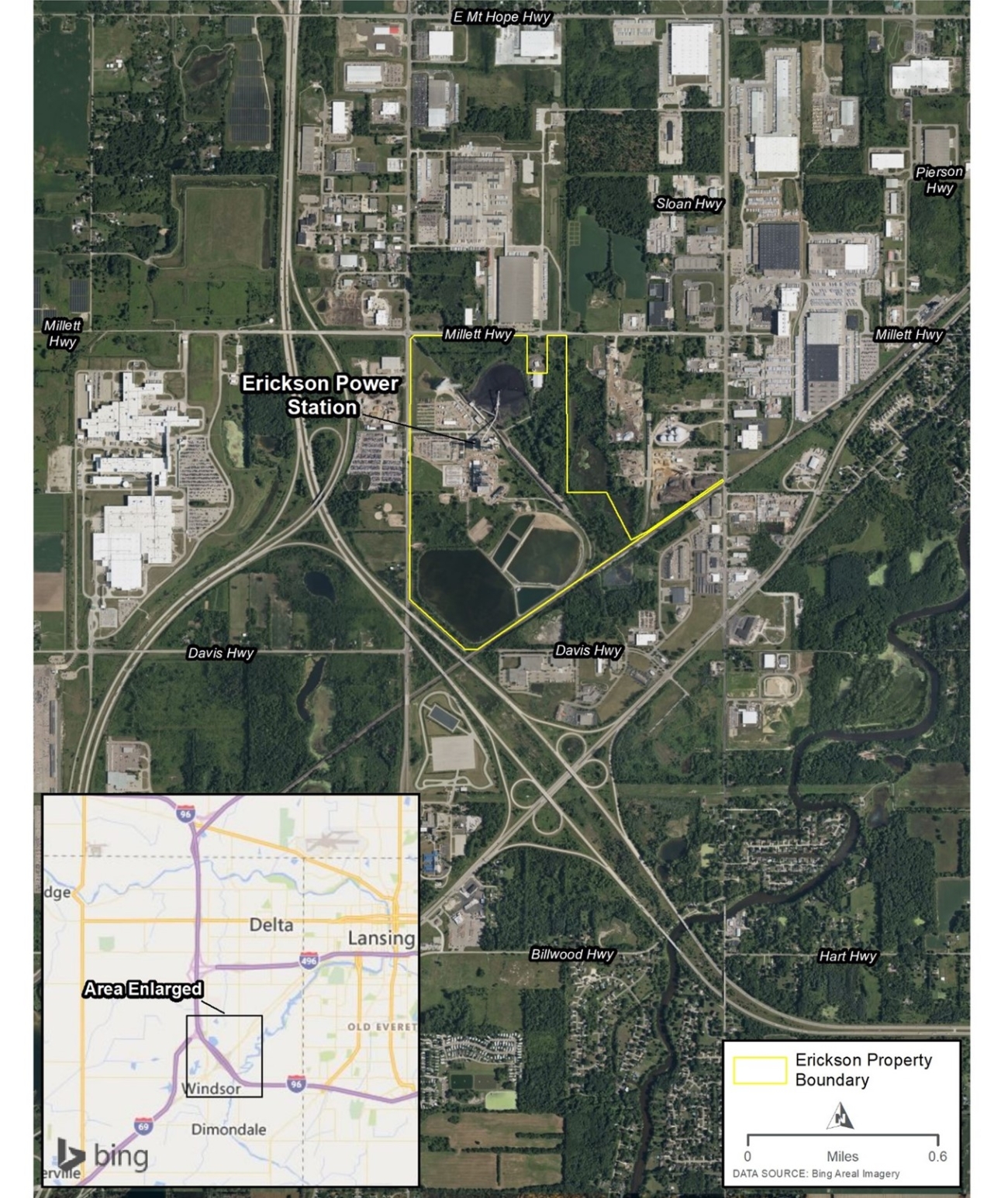
Erickson Power Station is located in Delta Township. Erickson includes three coal ash impoundments that, prior to plant closure, managed the facility’s bottom ash, a combustion product produced by coal-fired power plants like the Erickson Station.
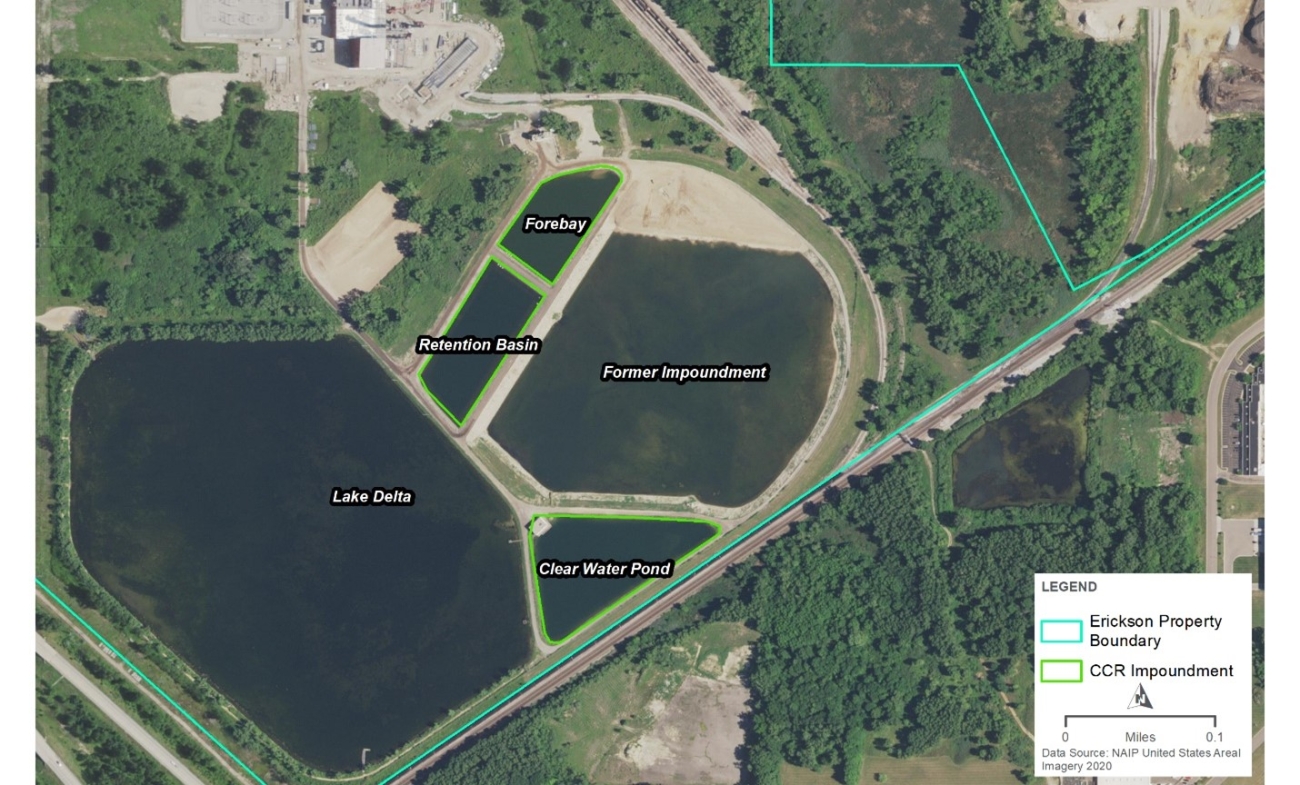
In 2015, the EPA finalized the Coal Combustion Residual (CCR) Rule, which applies to the Erickson Station coal ash impoundments. The rule requires various reports be available to the public, click here for the CCR reports.
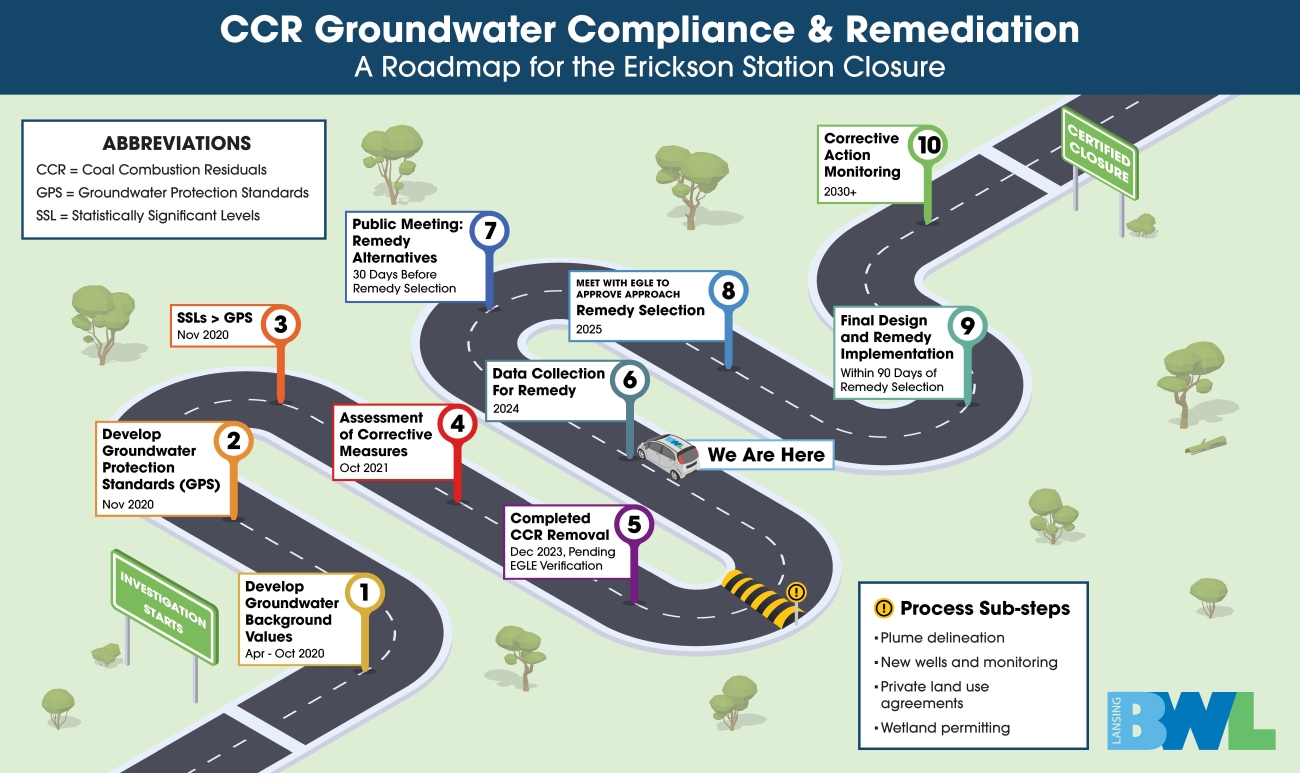
History of Coal Ash Management at Erickson
Like all coal plants, Erickson generated two types of ash 1. “fly ash” – small, light particles that easily become airborne, and 2. “bottom ash” – larger, heavier particles that settle to the bottom of the boiler. BWL began sending all coal ash, mixed with process water, to its original 33-acre impoundment system when the Erickson Station began operation in 1973. The coal ash settled in the impoundment and the process water was recirculated back to plant operations. Over the years, several changes were incorporated that served to significantly reduce the amount of ash stored onsite.
- Fly Ash Beneficial Reuse (circa 1976): All fly ash (approximately 4/5 of ash generated each year) was converted to a dry system and captured and shipped offsite for reuse in making cement or disposal in a regulated landfill.
- Retirement of the 33-acre Ash Impoundment (2009 through 2014): BWL commenced a 4-year project to remove the ash from the impoundment and install a new process water recirculation system within the footprint of the previous impoundment. Over 562,663 cubic yards of ash was removed from the 33-acre impoundment and disposed of in a regulated landfill.
- New Process Water Recirculation System (circa 2014): The new system utilized existing hydrobins to dewater and collect most of the ash and send it to a regulated landfill. The decant water then flowed to a much smaller (10 acre) system that was constructed within the footprint of the previous impoundment. It utilized an existing 5-acre clay lined impoundment and added two new geosynthetic lined impoundments.
Closing the Ash Impoundments by Removal
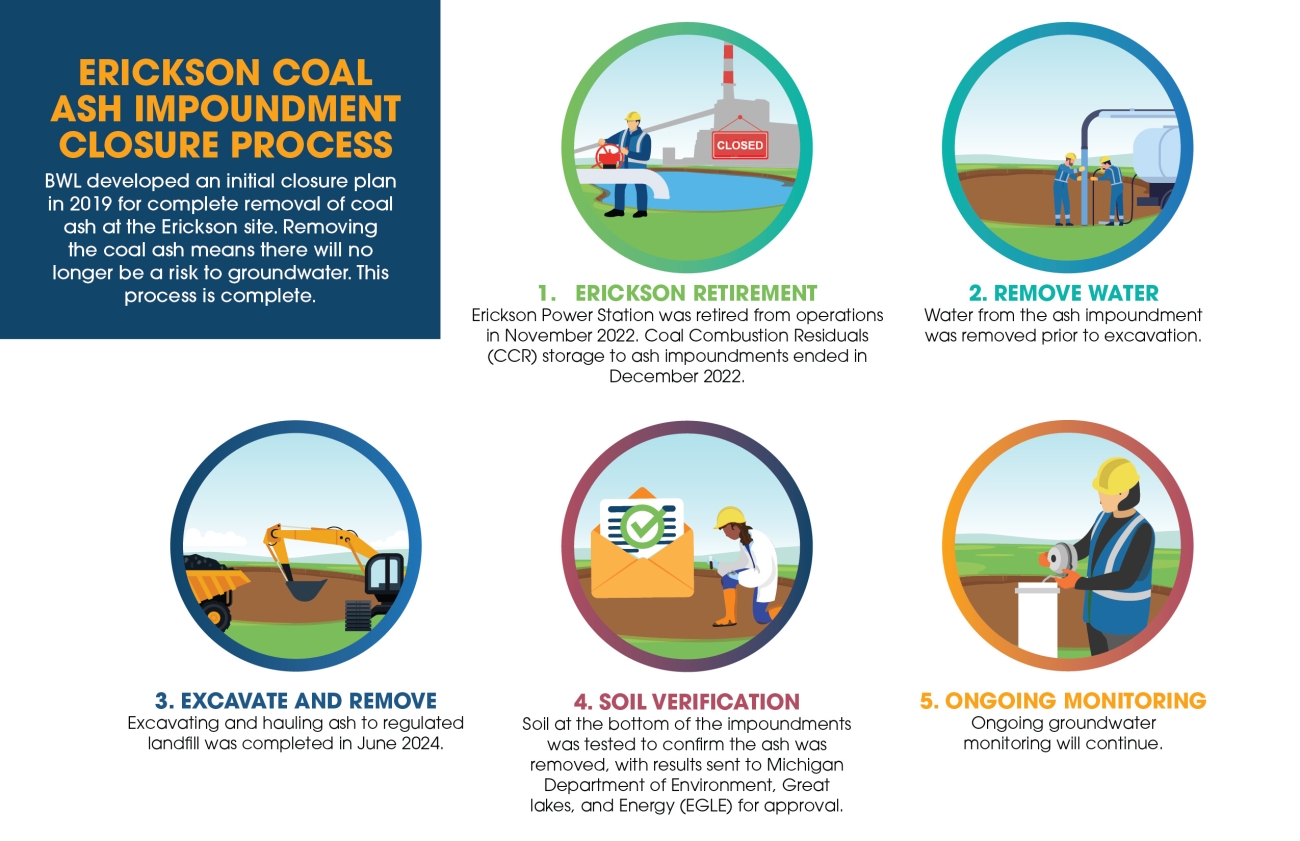
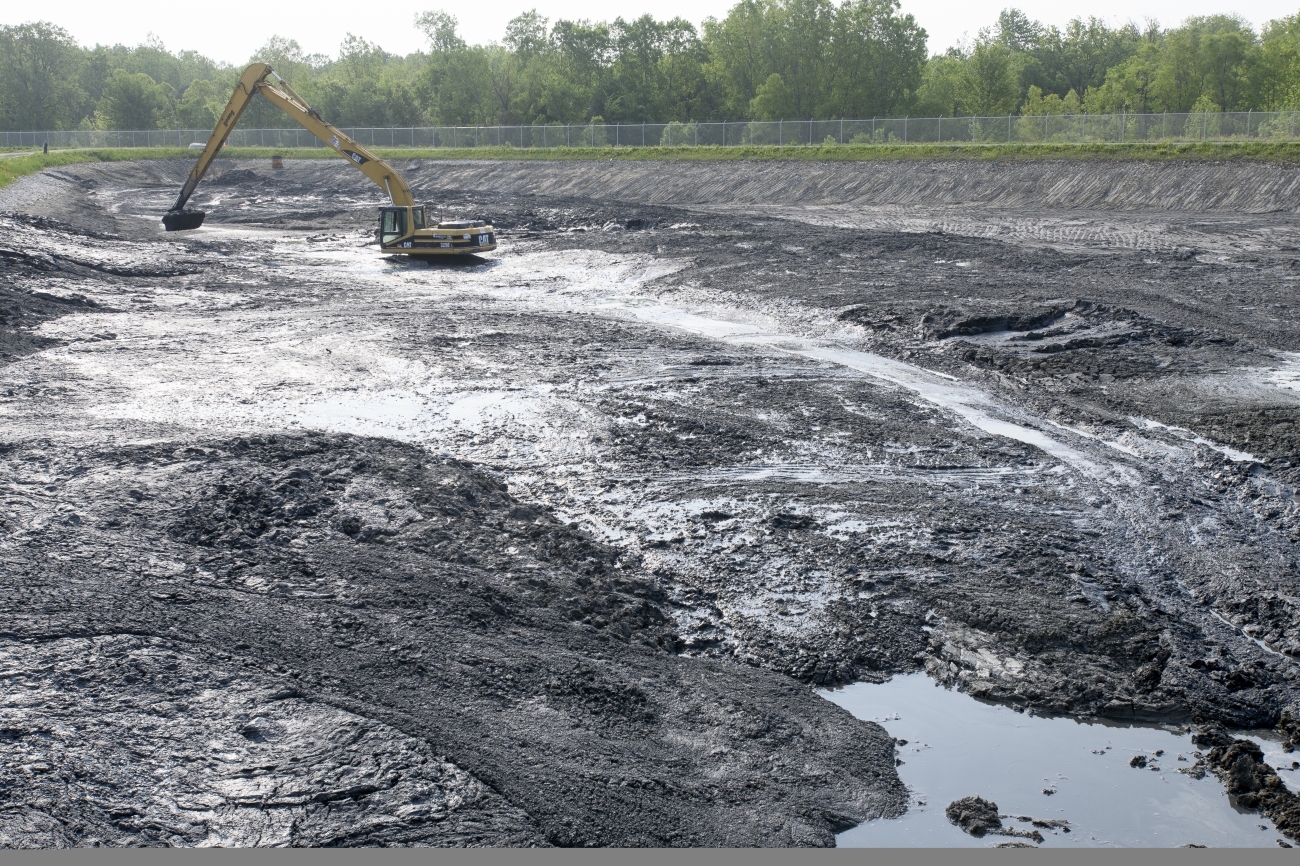
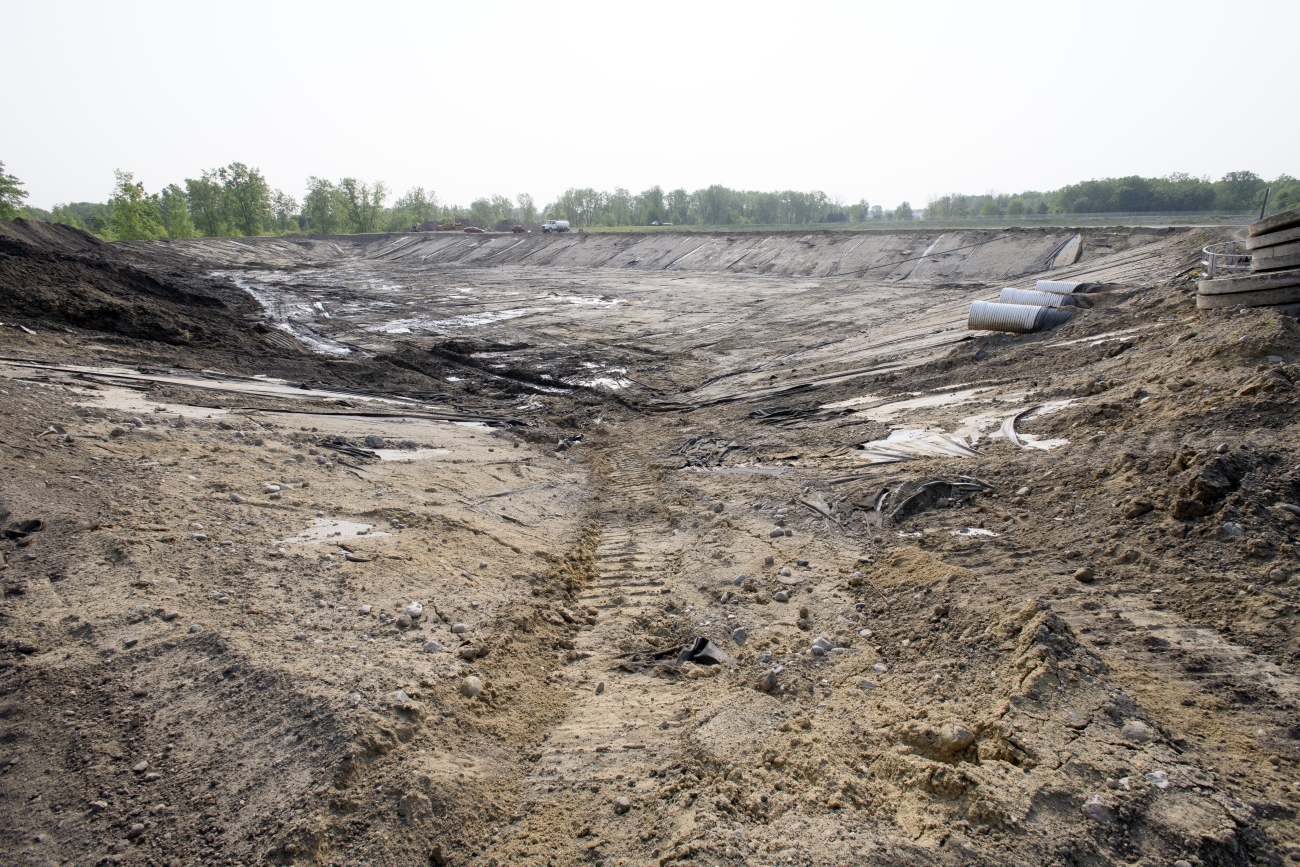
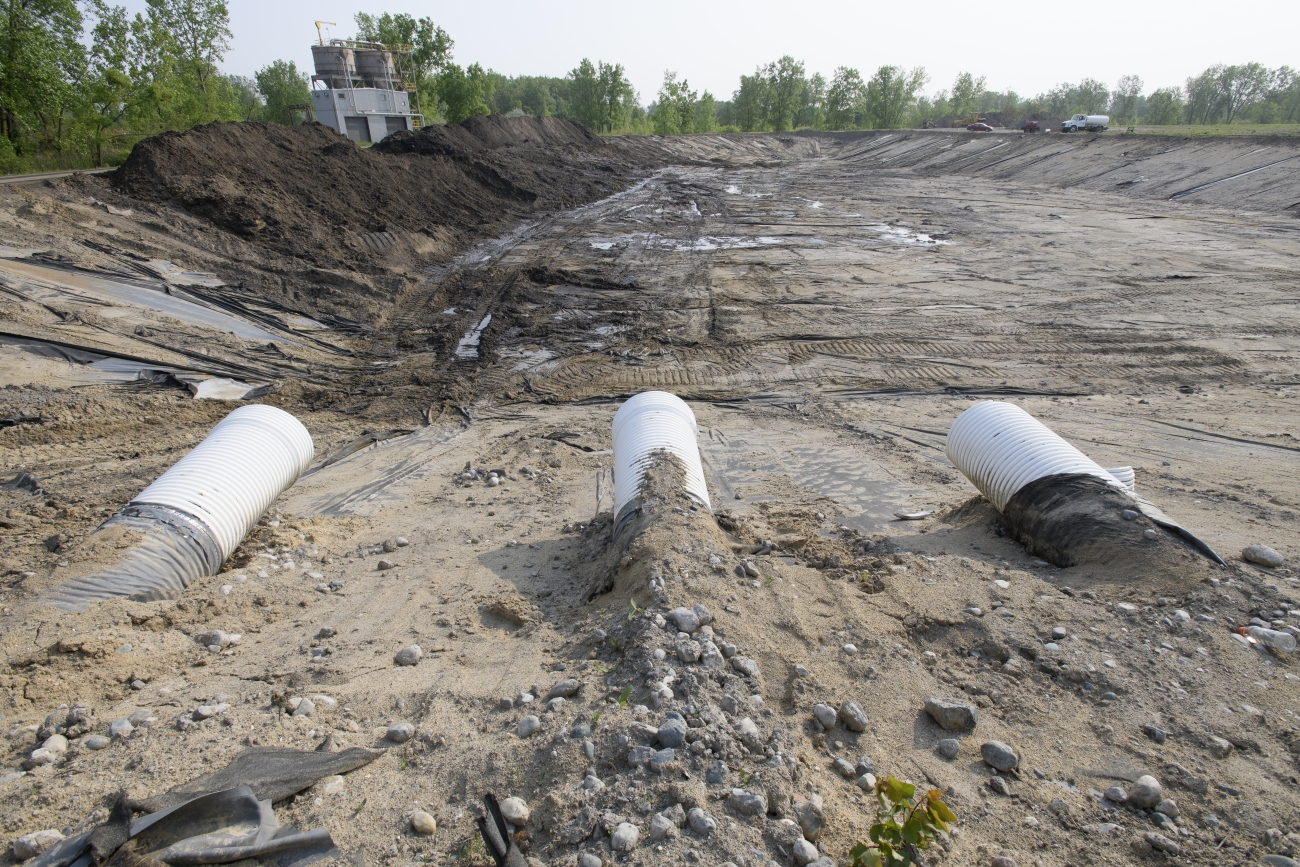
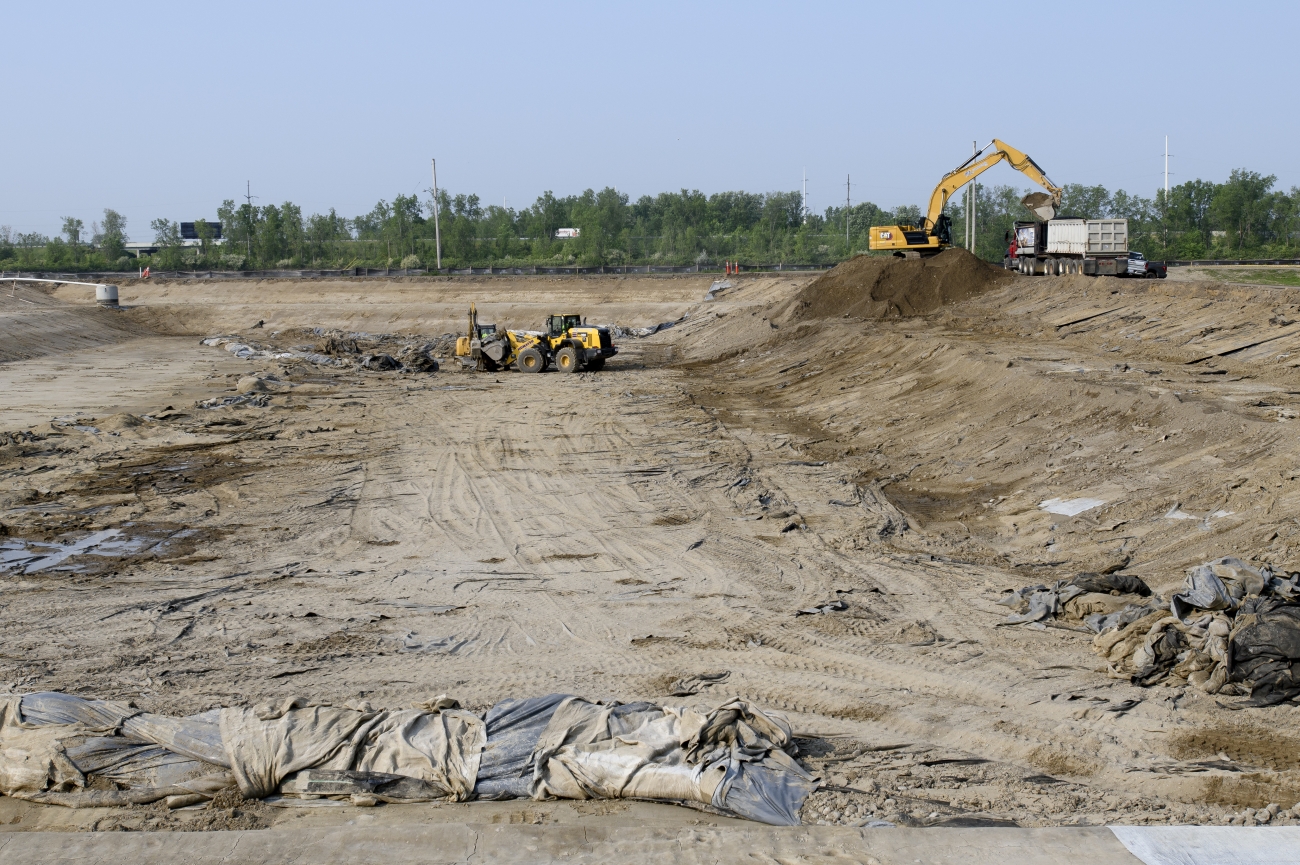
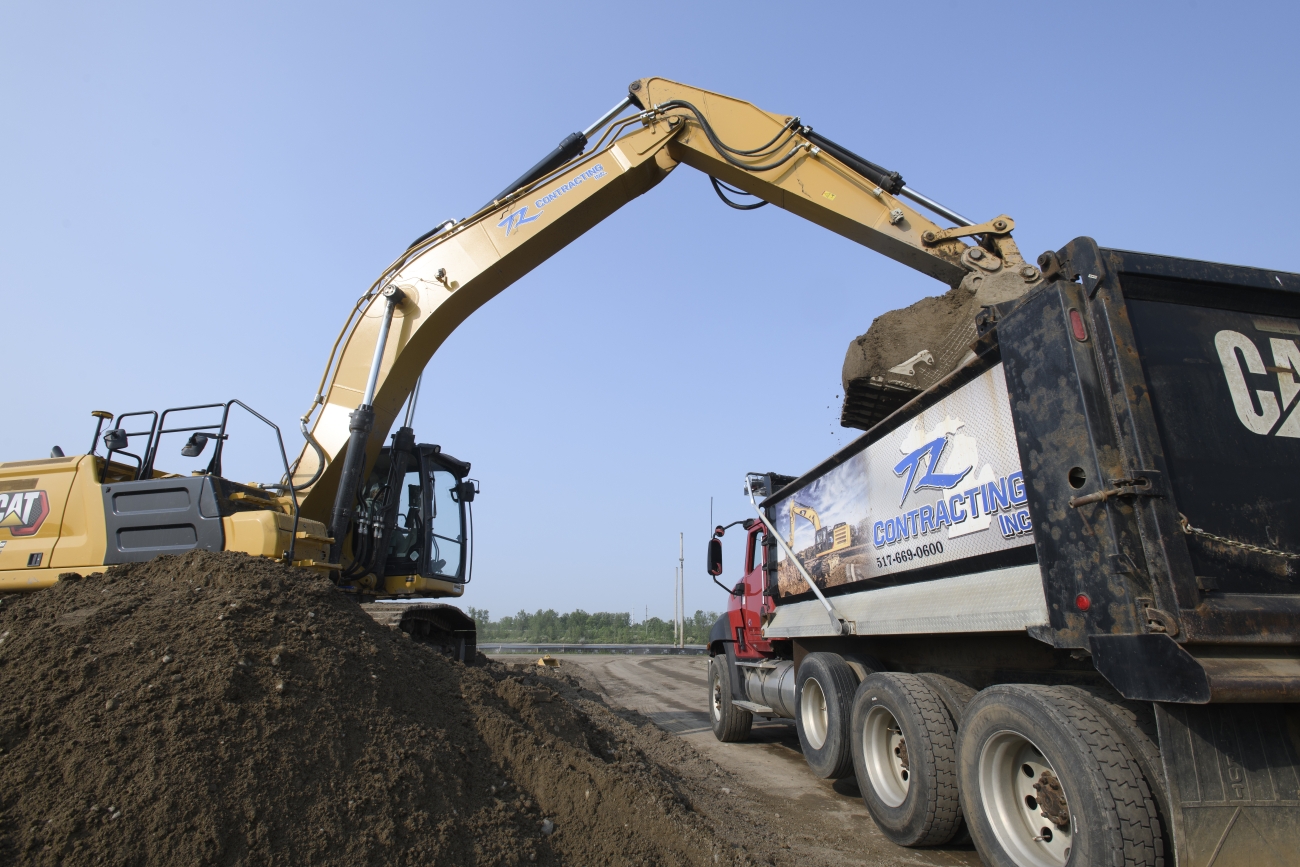
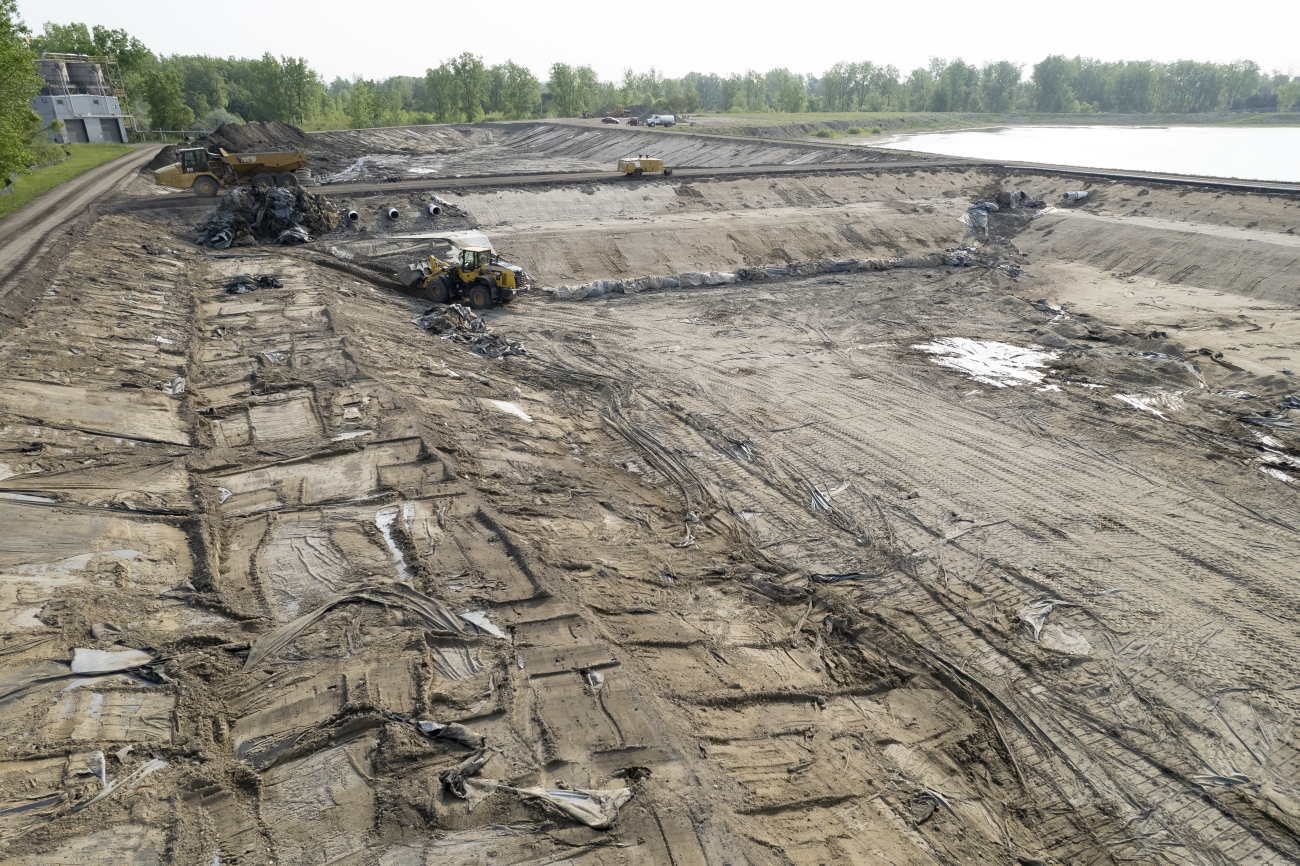
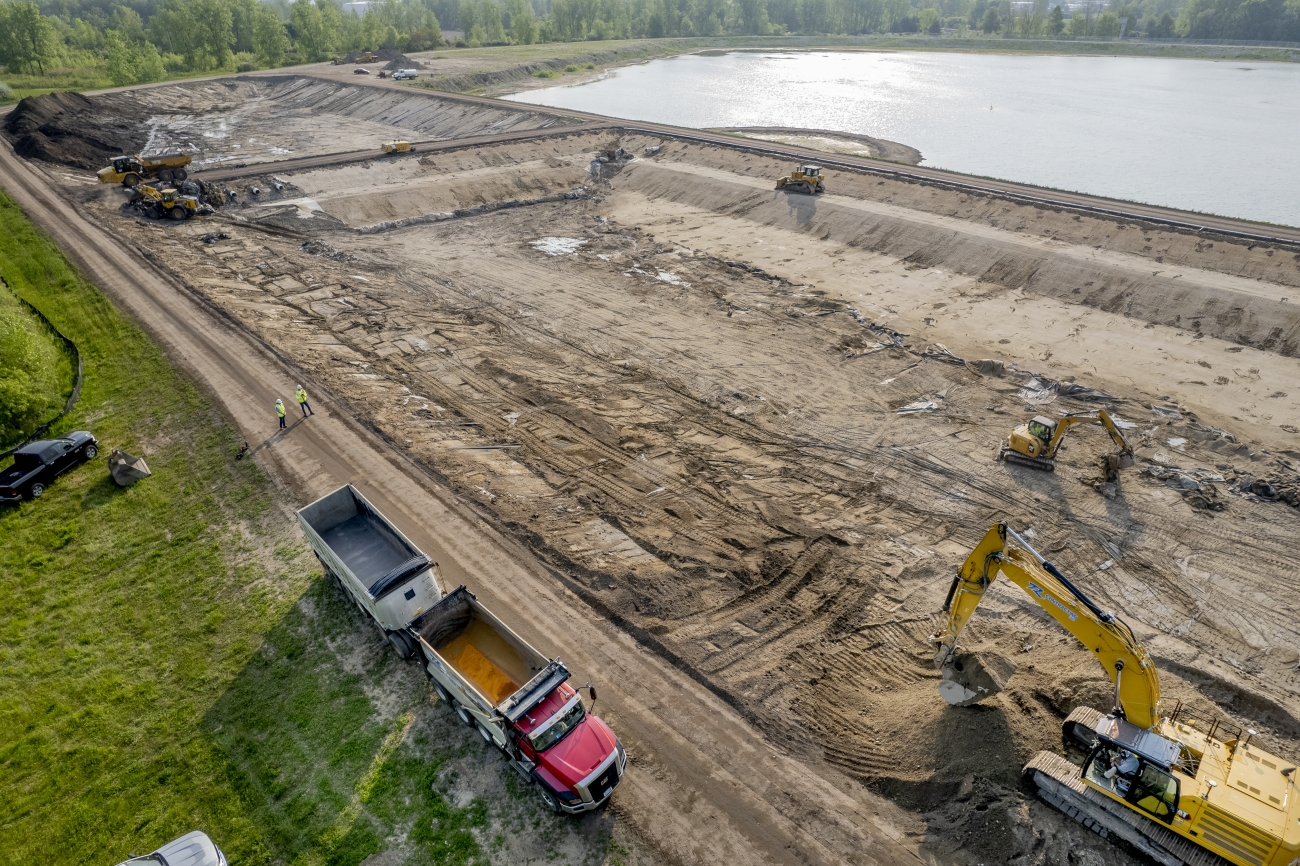
What is Groundwater?
Groundwater is water that is found in fully saturated soils, sediments and rocks below the surface of the ground. Groundwater flows through glacial sediments in the shallow subsurface and through bedrock deeper in the subsurface. These are referred to as glacial aquifer and bedrock aquifer.
The bedrock aquifer in the Lansing region is called the Saginaw Aquifer. It is the source for private drinking water wells in the area.
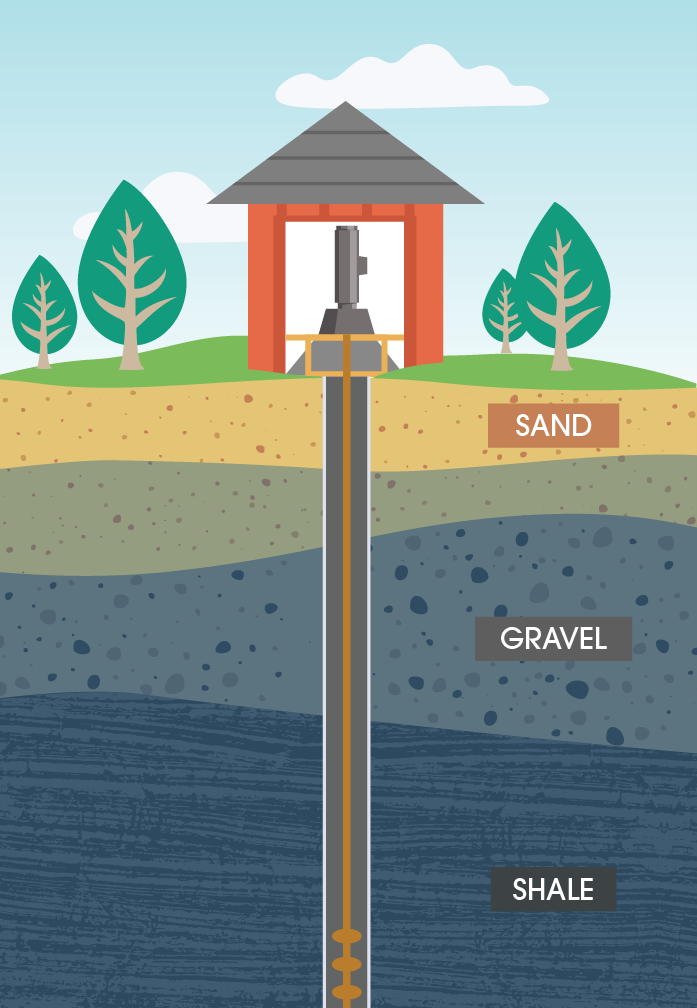
Groundwater Investigation
Ongoing groundwater monitoring at Erickson is done onsite in both the glacial and bedrock aquifers. The groundwater quality in the two aquifers looks different and therefore cannot be compared directly. Results of the groundwater monitoring in the shallower, glacial aquifer show that there are six constituents that are above the site-specific Groundwater Protection Standards (GPS). These are boron, lithium, molybdenum, sulfate, calcium, and total dissolved solids. The onsite downstream bedrock monitoring well does not show constituents above the Groundwater Protection Standards. The GPS is a site-specific value for each constituent, taking into account site specific background concentrations as well as drinking water and groundwater cleanup regulatory standards, if established. An exceedance above the site-specific GPS is interpreted as "groundwater contamination."
To continue our investigation of the potential impacts to the glacial aquifer and to further confirm the lack of impact to the bedrock aquifer, we installed additional onsite and offsite monitoring wells. We are still in the process of gathering and validating data for these newly installed wells.
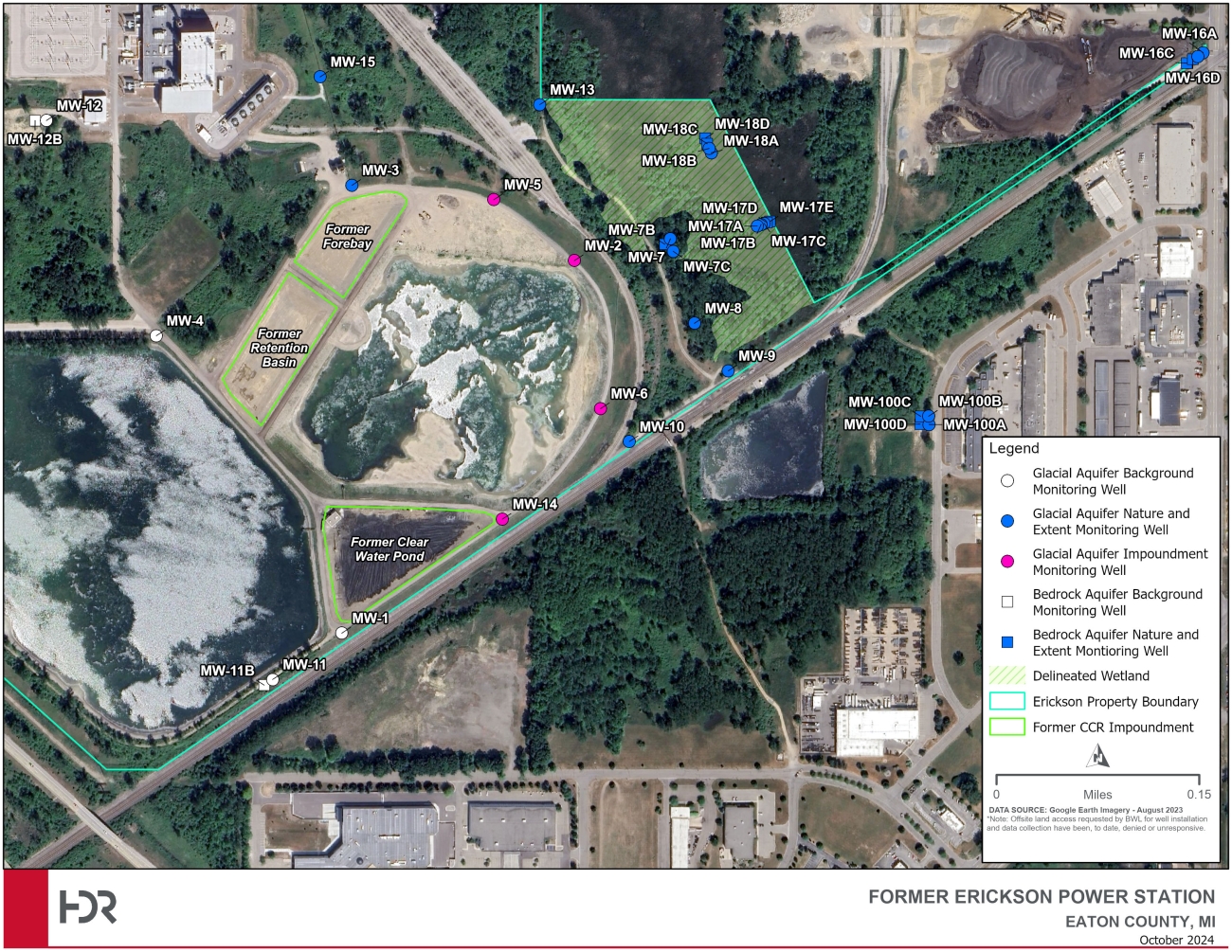
Frequently Asked Questions
The process of burning coal to produce steam and generate electricity leaves behind a byproduct referred to as “coal ash,” “coal combustion residuals,” or “CCR.”
Yes. CCR removal must follow federal and state regulations. Both the Federal CCR rule and the Michigan Part 115 (established regulations for EPA) have guidelines to complete the work and verify that coal ash has been removed appropriately.
Information specific to the impoundment closure and groundwater investigation projects are located at lbwl.com/Erickson. This website will be updated with project information and resources. In addition, all reports that are required by the CCR rule are located at lbwl.com/ccr. If you have any additional questions email us at ericksonproject@lbwl.com.
BWL’s groundwater monitoring system has been designed and constructed to meet the requirements of federal and state CCR regulations. The system includes wells placed in both the glacial (upper) and bedrock shale (lower) aquifers. More information about the existing wells and test data may be found at lbwl.com/ccr, “EPA/EGLE Annual Groundwater Monitoring Reports.” See the map here.
The CCR Rule created three phases of groundwater monitoring that include Detection Monitoring, Assessment Monitoring, and Corrective Action Monitoring. BWL is currently in the assessment monitoring phase.
BWL has begun to address the groundwater exceedances by ceasing coal ash disposal to the impoundments in November 2022 and subsequently removing ash from the impoundments. This impoundment cleanout represents source control, meaning that there will no longer be a risk to groundwater. BWL has begun to assess groundwater corrective measure alternatives, as described in the Assessment of Corrective Measures Report (lbwl.com/ccr), and additional data needs are required before a remedy is selected. For example, groundwater remediation typically begins after the extent of contamination in groundwater is determined to select and design the most effective remediation approach and location(s). Additional wells are required to delineate the plume boundaries and BWL will continue to install wells to fill data gaps, as necessary. BWL will study and select an appropriate treatment method. Subsequently, the Michigan Department of Environment, Great Lakes and Energy (EGLE) will review and approve BWL’s proposed treatment option study and treatment method selection. This is a data-driven process and will take years to complete, but we are moving as quickly as we are able.
BWL is required to sample onsite wells for 28 different constituents that are known to be associated with coal ash and are prescribed in the EPA’s CCR Rule and Michigan Part 115 regulations. We also test for general water quality parameters (bicarbonate, carbonate, magnesium, potassium, sodium) and field parameters (turbidity, temperature, dissolved oxygen, and oxidation-reduction potential).
CCR Constituents Sampled
- Antimony
- Arsenic
- Barium
- Beryllium
- Boron
- Cadmium
- Calcium
- Chloride
- Chromium
- Cobalt
- Copper
- Fluoride
- Iron
- Lead
- Lithium
- Mercury
- Molybdenum
- Nickel
- pH
- Radium 226 and 228 combined
- Selenium
- Silver
- Sulfate
- Thallium
- Total Dissolved Solids (TDS)
- Total Suspended Solids (TSS)
- Vanadium
- Zinc
BWL has conducted monitoring in a defined focus area downstream of Erickson. For more information view the items below:
Previous Updates
- 2023 Erickson Station Semiannual Progress Report for Selection of Remedy can be found here.
- 2023 Semiannual Groundwater Monitoring Report covering work performed January – June 2023, can be found here.
- Update on new wells installed. See map under “Groundwater Investigation.”
- Boron Isotope Analysis. See last FAQ.
